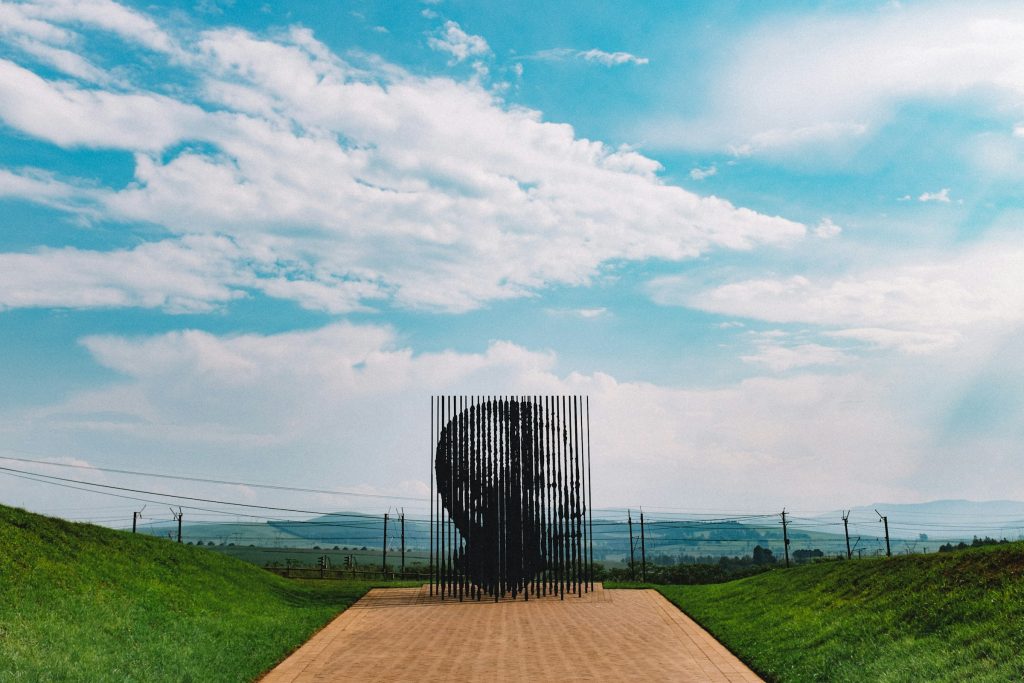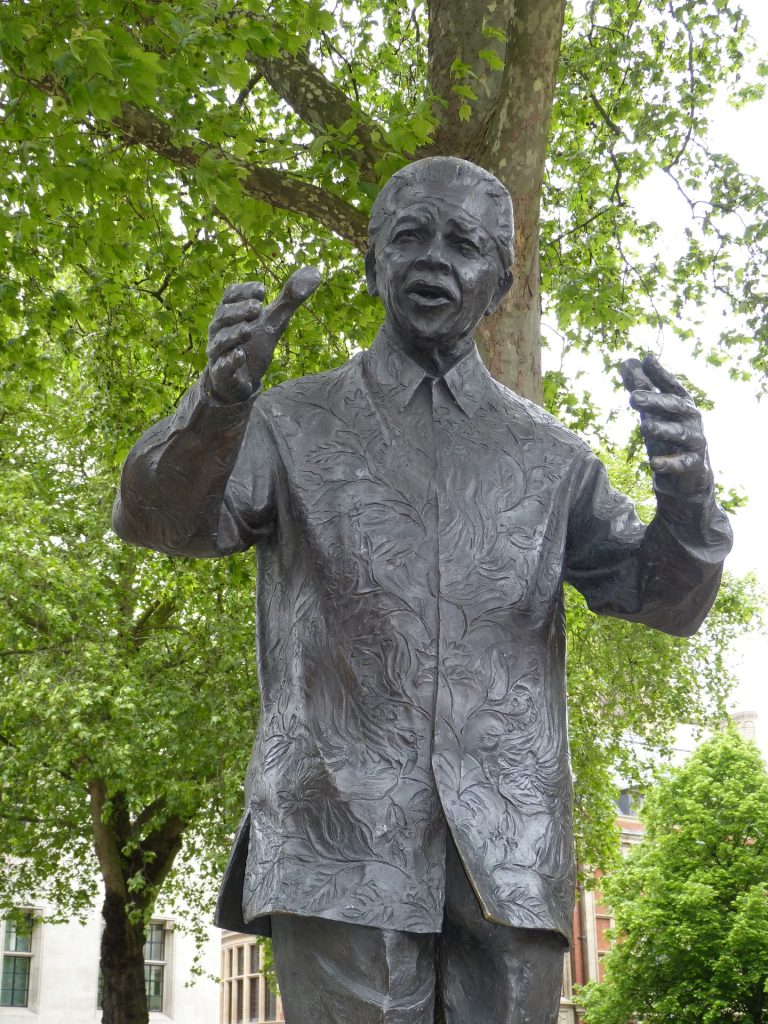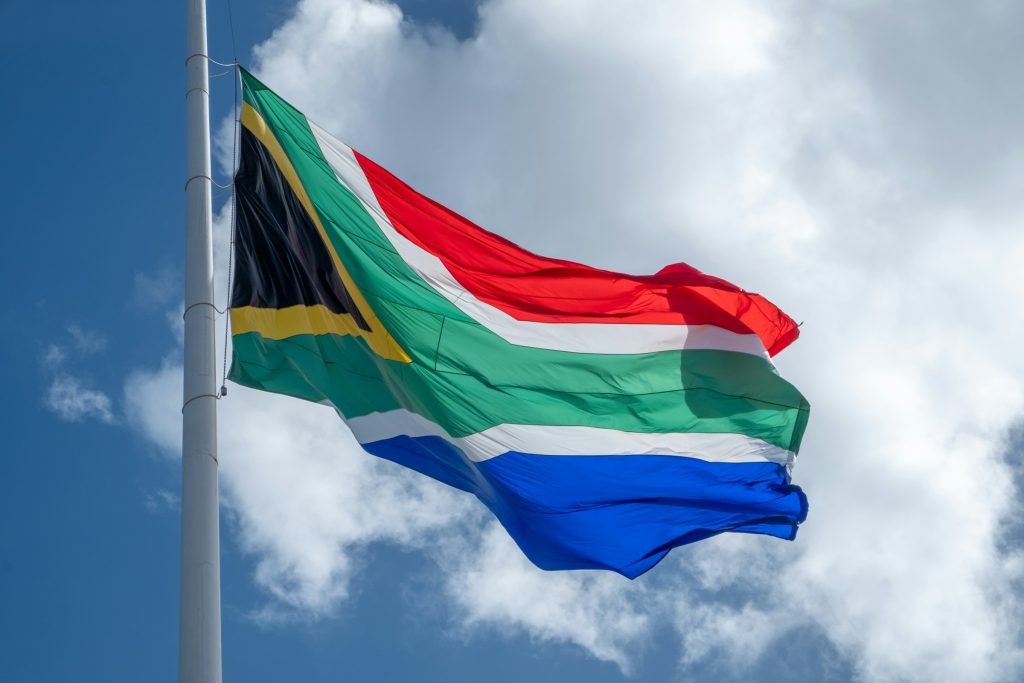8 Historical Stops in South Africa for Nelson Mandela Day
By Dale Wakefield
18 July 2024

Nelson Mandela Day, celebrated annually on 18 July, honours the legacy of South Africa’s late former president and a global icon for peace, justice, and reconciliation. The United Nations officially declared Mandela’s birthday as Nelson Mandela International Day in 2009, recognising his contributions to democracy, freedom, and human rights. It’s a day to celebrate his life and promote the values he stood for: freedom, equality, and respect for all.
Mandela left an indelible mark on the world. South Africa offers a wealth of historical sites that provide insight into his life and the struggle against apartheid. Here are some key locations significant to Nelson Mandela’s life, each offering a unique and enriching experience.

These locations offer more than just historical facts but provide a deeper connection to the values and sacrifices that Mandela stood for. Each site is a testament to his enduring legacy and offers educational programs, guided tours, and personal stories that bring his journey to life – crafting a man out of the legend.
Whether you’re a history buff, a cultural enthusiast, or a curious traveller, exploring South Africa through the lens of Mandela’s legacy is a powerful way to understand the country’s history and the profound impact one man had on the world.
1. Robben Island
Located off the coast of Cape Town, Robben Island is perhaps the most famous site associated with Nelson Mandela. He spent 18 of his 27 years of imprisonment here, making it a must-see destination when visiting Cape Town. Today, Robben Island is a UNESCO World Heritage Site and museum, offering guided tours led by former political prisoners. Visitors can see Mandela’s cell, the limestone quarry where he worked, and the overall conditions of the prison, gaining a deep understanding of the resilience and sacrifices made by Mandela and his fellow inmates.
2. Nelson Mandela Museum, Mthatha
The Nelson Mandela Museum in Mthatha, Eastern Cape, spans three sites: Mvezo (his birthplace), Qunu (where he grew up), and the Bunga Building in Mthatha. The museum provides a comprehensive look at Mandela’s early life, his rise as a leader, and his long walk to freedom. Exhibits include personal artefacts, photographs, and interactive displays that highlight his journey from a rural village to the presidency of South Africa.
3. Constitution Hill, Johannesburg
This significant site once served as a prison that held Mandela during the Treason Trial of 1956 and again in 1962. Today it is home to one of the most popular tourist stops for the City Sightseeing Hop On Hop Off Bus in Johannesburg, the Constitutional Court of South Africa and serves as a museum. Visitors can explore the Old Fort Prison Complex, Women’s Jail, and the Awaiting Trial Block, learning about the history of South Africa’s justice system and Mandela’s role in the fight for equality.
4. Vilakazi Street, Soweto
Vilakazi Street in Soweto is the only street in the world that has housed two Nobel Peace Prize winners: Nelson Mandela and Archbishop Desmond Tutu. Mandela’s former home, now the Mandela House Museum, is located here. The museum offers a glimpse into his family life before his arrest. The street itself is vibrant, filled with restaurants, street art, and cultural activities, making it a must-visit for those wanting to experience the community spirit of Soweto.
5. Freedom Park, Pretoria
Freedom Park is a tribute to South Africa’s struggle for freedom and humanity. The park features a memorial to those who died in the struggle against apartheid, as well as a museum that chronicles the country’s journey to democracy. It’s a place of reflection and learning, offering panoramic views of Pretoria and a serene environment to ponder the profound impact of Mandela’s life and work.
6. Apartheid Museum, Johannesburg
The Apartheid Museum is a crucial site for understanding the full impact of apartheid on South Africa and Nelson Mandela’s role in dismantling it. The museum offers a detailed and immersive experience through exhibits that chronicle the rise and fall of apartheid, using photographs, artefacts, newspaper clippings, and personal stories. It provides a poignant look at the country’s history and the struggle for freedom.
7. Liliesleaf Farm, Johannesburg
After the ANC was banned in 1960, Liliesleaf Farm became the secret headquarters of the African National Congress (ANC) and the site of many significant events in the anti-apartheid struggle. Nelson Mandela lived here undercover as a caretaker and cook under the alias David Motsamayi. In 1963, a police raid on the farm led to the capture of many ANC leaders. By the time the farm was raided, Nelson Mandela was already in custody. This event contributed greatly to the Rivonia Trial. Today, Liliesleaf is a museum where visitors can learn about the farm’s role in the liberation movement.
8. Nelson Mandela Capture Site, Howick
The Nelson Mandela Capture Site in Howick, KwaZulu-Natal, marks the location where Mandela was arrested on 5 August 1962. This is a great place to stop when travelling between Durban and the Drakensberg. The site features a powerful sculpture made up of 50 steel columns that form an image of Mandela’s face when viewed from a certain angle. The on-site museum provides detailed information about Mandela’s arrest, his subsequent trial, and his legacy, making it a moving tribute to his fight for freedom.

Contact
Somak House
Harrovian Business Village
Bessborough Road
Harrow On the Hill
HA1 3EX
Tel: +44 20 8423 3000
Fax: +44 20 8423 7700
Email: info@somak.com
Opening times
| Mon - Fri | : | 9am to 6pm |
| Sat - Sun | : | Closed |
Easter Bank Holiday
| Mon, 21-Apr | : | Closed |






